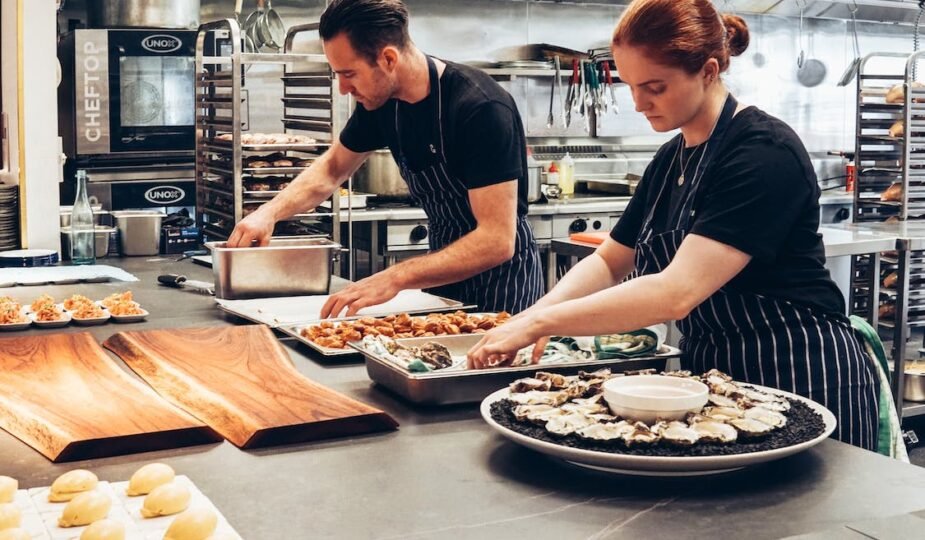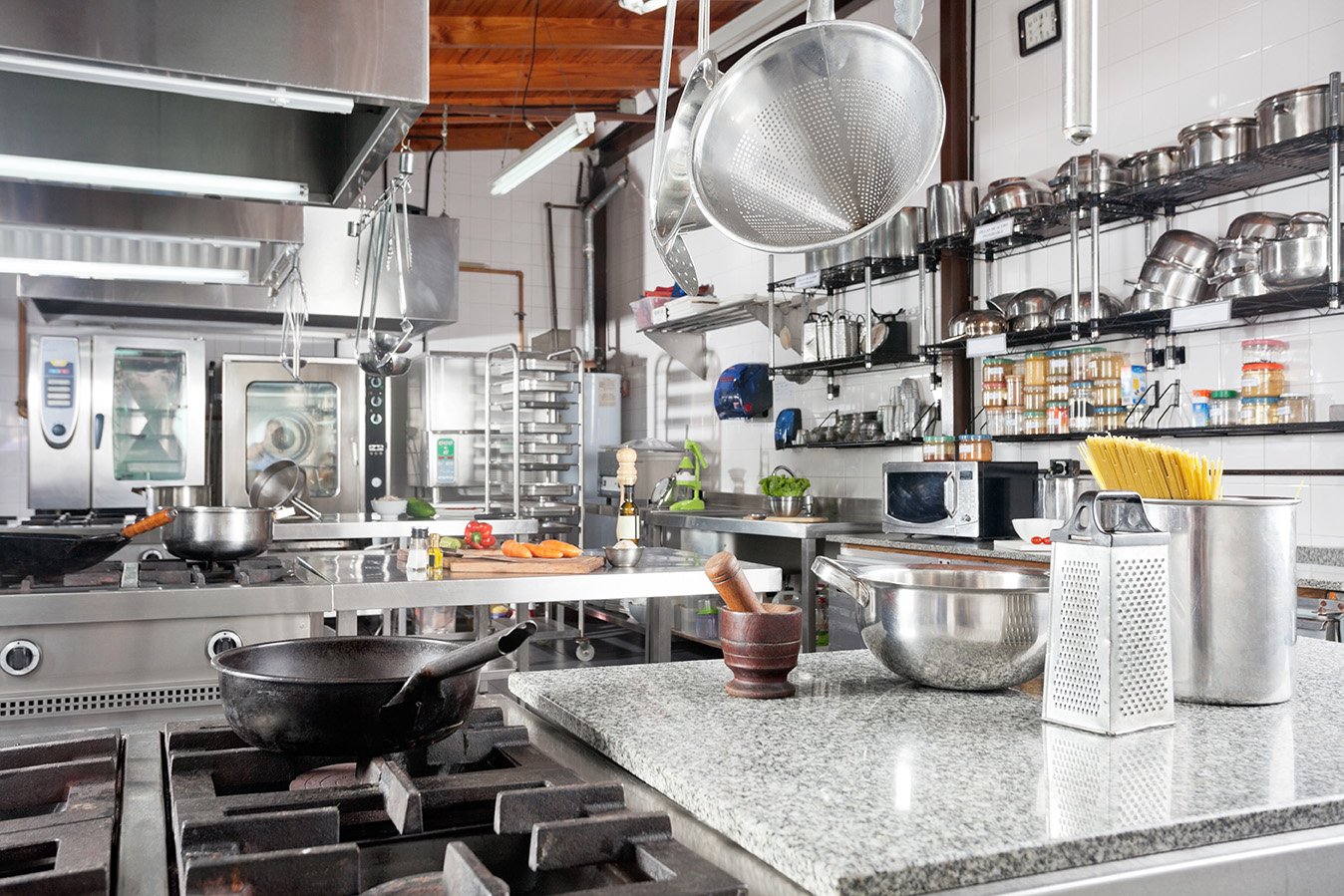
How to Ensure Healthy Working Conditions in Your Restaurant Kitchen
The kitchen is the heart of any home or food establishment. Ensuring a healthy working environment is crucial for the well-being of everyone involved.
According to Reader’s Digest, restaurant kitchens have a lot of unhygienic practices going on behind the scenes. These include everything from unwashed hands handling your food to meal preparations in dirty kitchens. Of course, when these restaurants do get caught, they lose their reputation hard.
ABC57 reported how McDonald’s went into full defensive mode after two former employees spoke out about the unsanitary conditions prevalent at its Niles, Mi outlet. From grease build-up on the floors to bugs inside the restaurant, this outlet of McDonald’s had all sorts of unhygienic problems. These revelations did a lot of reputational damage to the outlet as well as McDonald’s brand name in general.
Ensuring a safe and clean kitchen is essential to prevent accidents, reduce health hazards, and maintain your restaurant’s reputation. It’s also important for promoting productivity. In this article, we’ll explore a few essential tips to ensure healthy working conditions inside your restaurant kitchen.
Ensure Proper Hygiene Practices
One of the fundamental pillars of a healthy kitchen is maintaining proper hygiene practices. This includes regular handwashing, using separate cutting boards for raw meat and vegetables, and sanitizing kitchen surfaces regularly. All kitchen staff must be well-trained in food safety protocols and hygiene measures to prevent the spread of harmful bacteria and foodborne illnesses.
It’s essential to store food correctly to avoid cross-contamination. Separate raw meat, poultry, and seafood from other food items. Store them at the appropriate temperatures to avoid bacterial growth. Ensuring proper storage will not only keep your kitchen safe but also extend the shelf life of your ingredients.
Allow Adequate Ventilation and Airflow
Cooking can generate heat, steam, and odors that can lead to discomfort and even health issues for kitchen staff. Ensuring adequate ventilation and airflow inside the kitchen is vital to remove cooking fumes, excess heat, and airborne particles. A well-designed ventilation system can also help prevent the buildup of grease, which can become a fire hazard.
Regularly check and clean exhaust hoods and filters to maintain optimal performance. If your kitchen lacks proper ventilation, consider installing exhaust fans or opening windows to facilitate air circulation. Proper airflow not only contributes to a healthier environment but also enhances the overall cooking experience.

Prioritize Safety
Make sure that the staff working inside the kitchen always maintains a dress code. That means they must wear gloves, aprons, and hairnets when handling food. At the same time, lay down clear instructions on the dos and don’ts inside the kitchen. These could include knife handling practices, throwing food here and there, maintaining a safe stove temperature, etc.
Since fire hazards are common in kitchens, you should also have fire extinguishers inside. However, make sure you don’t buy any extinguisher or foam that’s toxic, like Aqueous Film Forming Foam (AFFF). According to TruLaw, the AFFF firefighting foam can lead to different types of cancer and other health effects. The presence of forever chemicals in this foam is what’s causing these health risks.
The AFFF firefighting foam lawsuit was filed to seek compensation for the victims of this foam. They include people diagnosed with cancer or other health problems after using or coming in contact with this foam. Therefore, when you’re buying such fire suppression equipment, make sure you’re not putting your staff at risk should they ever need to use them.
Focus on Ergonomic Design and Equipment
An often overlooked aspect of maintaining a healthy kitchen is the design and arrangement of the workspace. An ergonomic kitchen design can significantly reduce the risk of work-related injuries and improve efficiency. Consider the following factors:
- Counter Heights: Ensure the counter heights are appropriate for the height of your staff to prevent unnecessary strain on their backs and shoulders.
- Flooring: Choose non-slip flooring materials to reduce the risk of slips and falls, especially in areas prone to spills.
- Lightweight Equipment: Whenever possible, opt for lightweight and easy-to-handle kitchen equipment to minimize physical strain on staff.
- Organized Layout: Keep frequently used items within easy reach to minimize bending, stretching, and unnecessary movements.
Ensure Regular Maintenance and Cleaning
Regular maintenance and cleaning are crucial for a safe and healthy kitchen environment. Develop a comprehensive cleaning schedule that includes daily, weekly, and monthly tasks. Regularly inspect kitchen equipment to identify and address any malfunction or safety issues promptly.
Cleaning not only keeps the kitchen sanitary but also helps extend the life of your equipment and prevents the accumulation of dirt and grime. Ensure that the cleaning products used are safe and appropriate for kitchen surfaces. Most importantly, always follow manufacturer guidelines for the maintenance of kitchen equipment and tools.
Conclusion
According to data from the National Restaurant Association, only 20 percent of restaurants in the US can succeed in the market. The rest fail for various reasons, one of which is failing to maintain good food quality. In a lot of cases, this failure is because of a lack of hygienic kitchen practices.
Thus, if you’re running a restaurant, it’s imperative that you ensure a safe and clean kitchen. Only then can you maintain a healthy work environment inside it, and help your business succeed.









